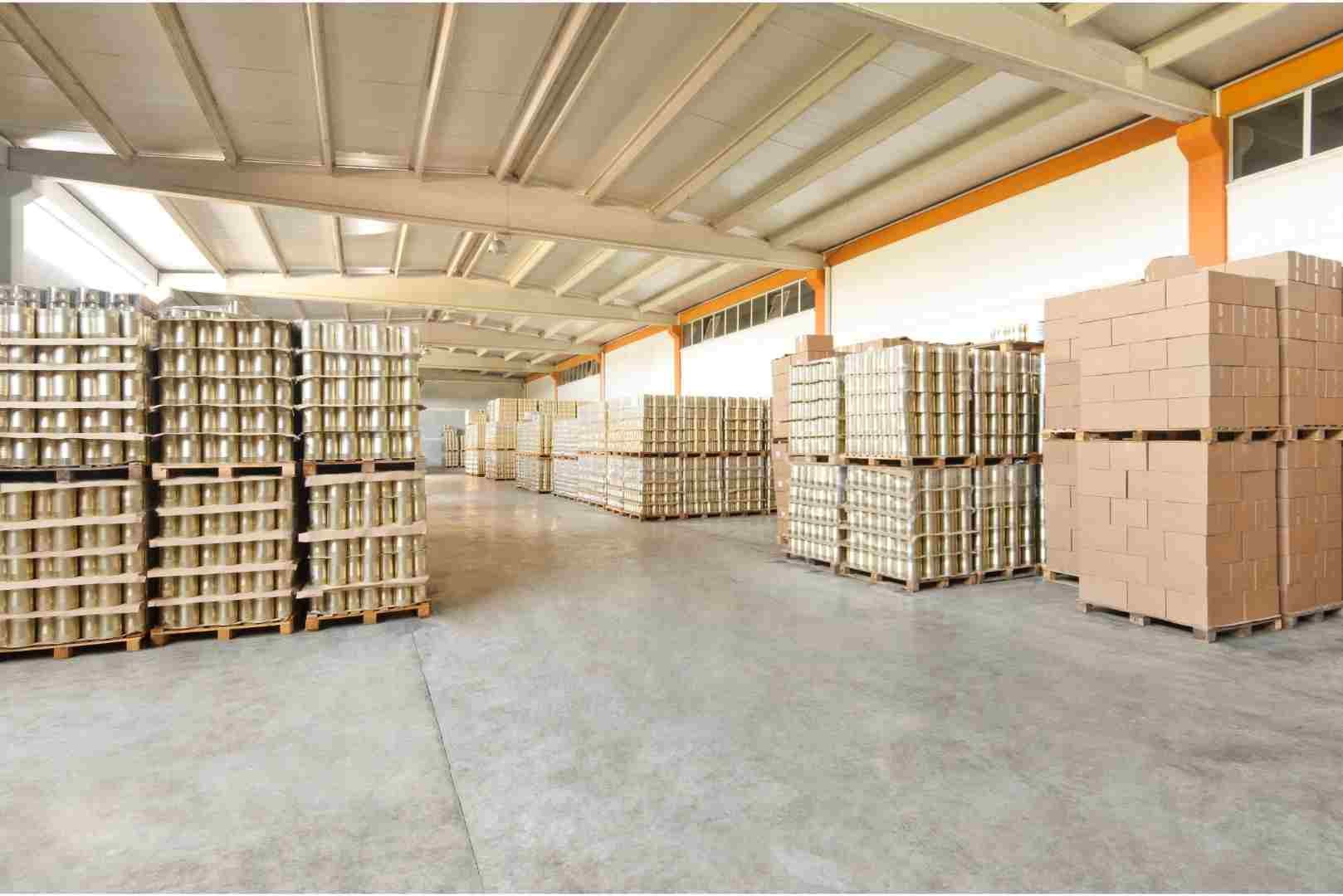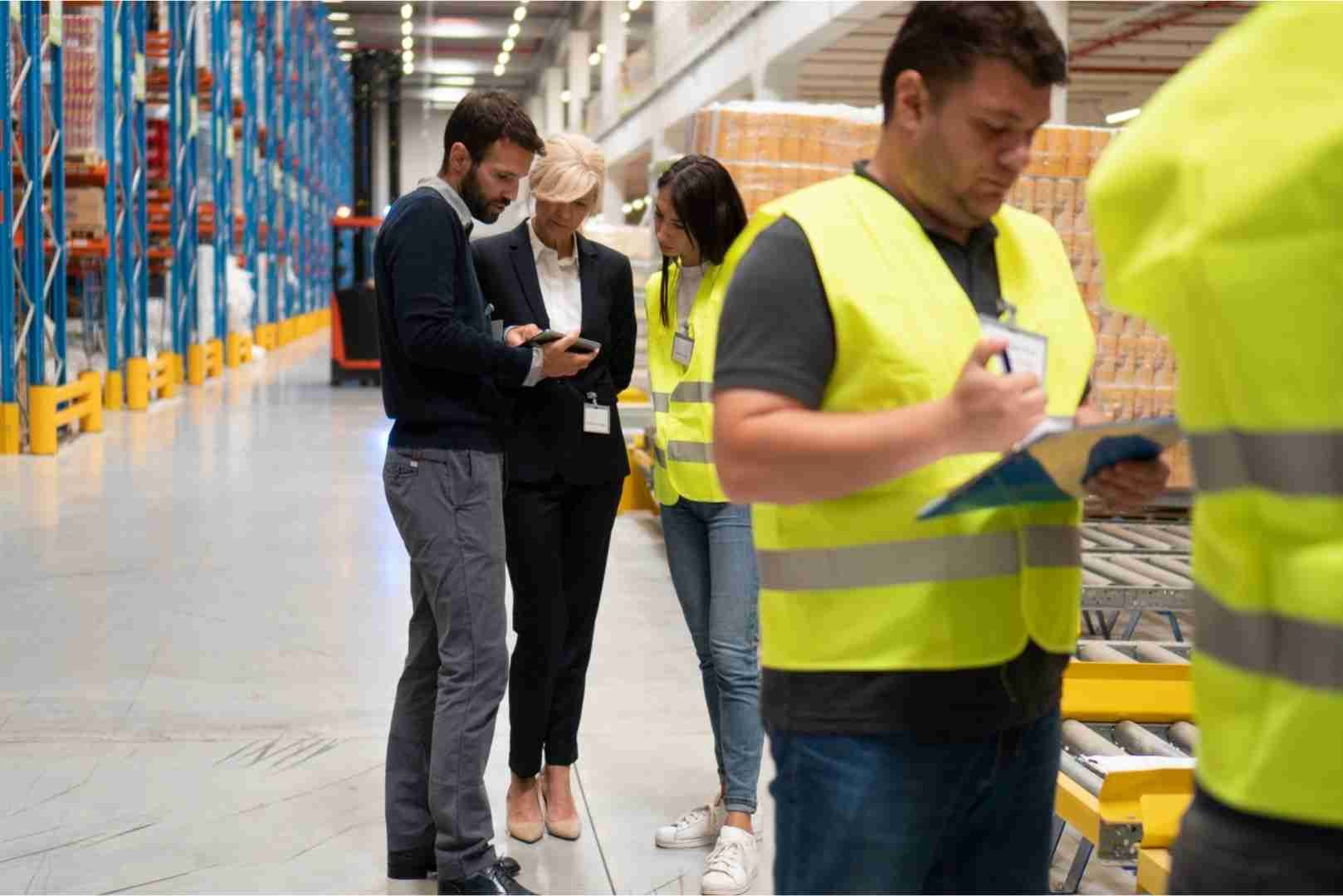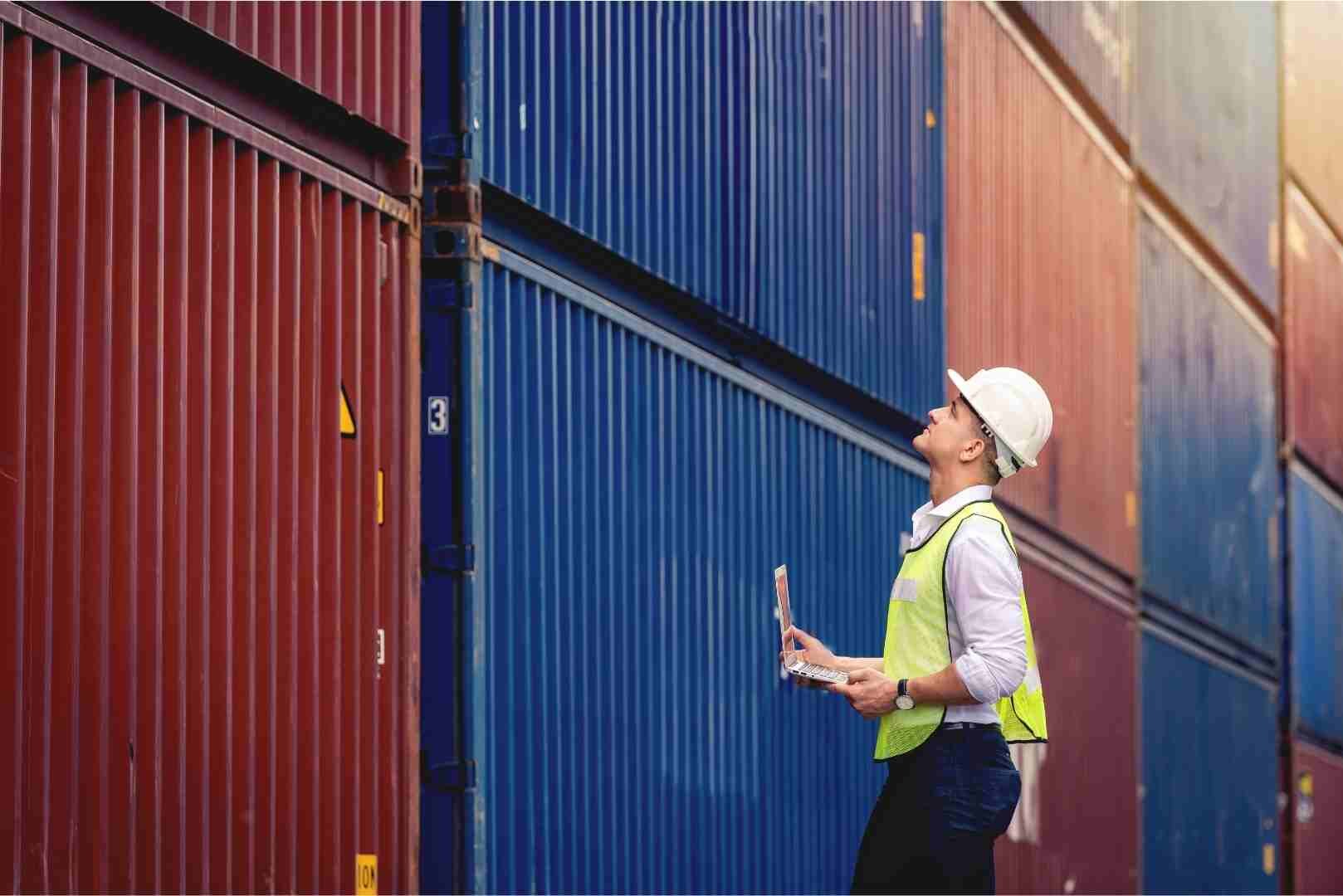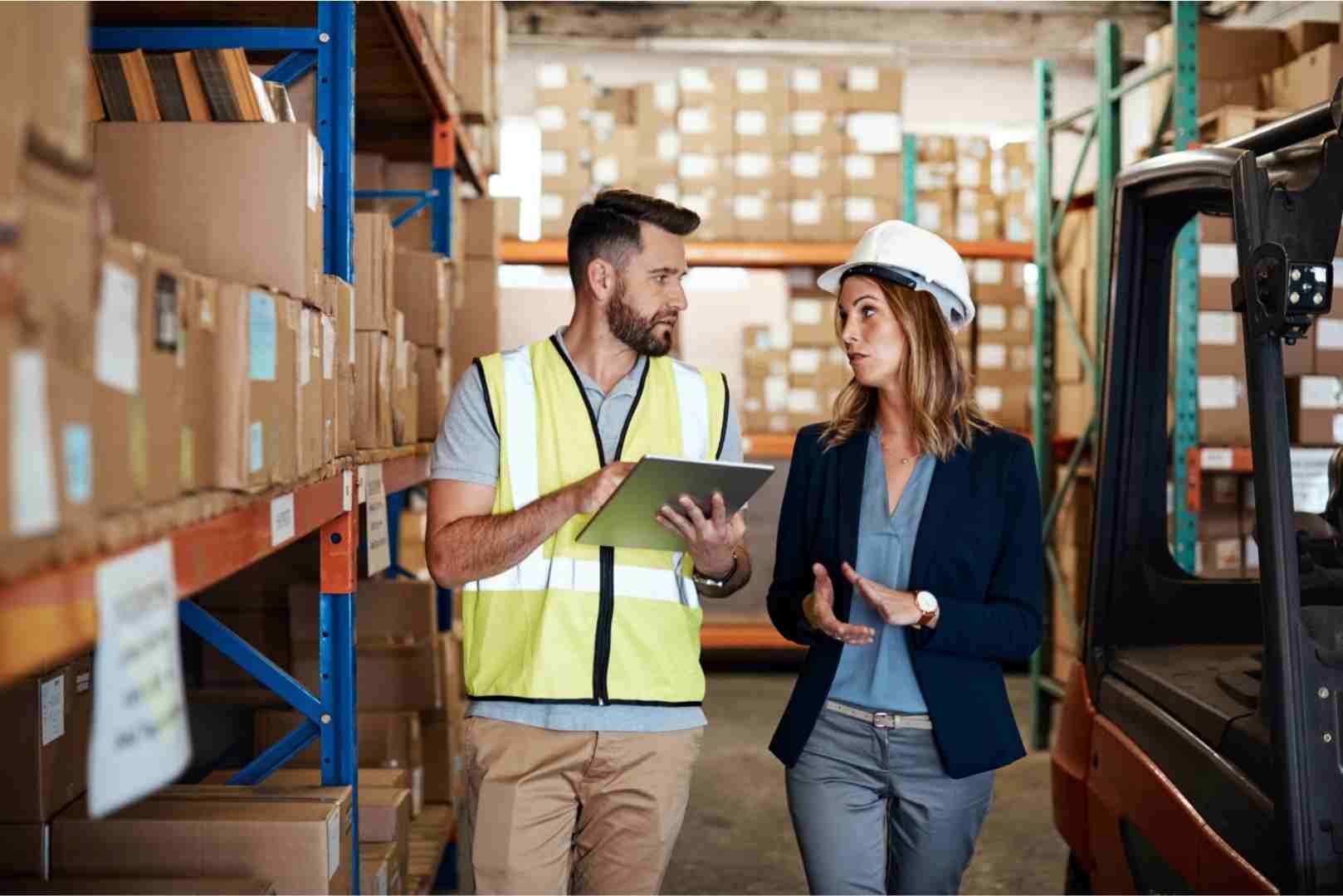For the majority of ecommerce retailers, warehouses serve as a hub for all shipping, distribution, and storage activities. But whether you’re a local business or a global enterprise, at some point, your warehouse might wind up being too small to keep up with your operational demands—which is where talk of warehouse expansion usually comes into play.
Keep reading to learn all the ins and outs of the warehouse expansion process, and to discover alternative ways to optimize your warehousing that’ll save you tons of time (and money).
What is the warehouse expansion process?
As your ecommerce business grows and your order volume ramps up, you may need to expand your warehouse space in order to keep operations running smoothly.
Generally speaking, there are three factors involved with the warehouse expansion process: acquiring more space, improving existing systems, and increasing manpower capacity.
Acquiring more space
It may seem obvious, but the purpose of warehouse expansion is to find (or create) more available space for use. In other words, it’s rooted in the need for more square footage.
What you do with your extra warehouse space is entirely up to you, though it’s commonly designated for receiving and shipping products from the manufacturer. But no matter how you use the additional real estate, deciding on the amount of space you need and/or where you want it to be located remains the first step in the expansion process.
Improving existing systems
Simply put, there’s not much point in warehouse expansion if you’re not also investing in improved systems. A warehouse expansion presents a wonderful opportunity to upgrade the facilities, equipment, and organization your company uses on a daily basis.
For instance, you might explore new systems for storage like multi-tier racks, mobile shelving, or mezzanine flooring. These options (particularly the latter) help grow your storage space by making use of the vertical space that’s often overlooked.
The other great thing about improving your warehousing systems is you can boost your safety measures at the same time. No one wants accidents or injuries occurring at their warehouse, so an expansion allows you to enforce more protocols that’ll protect your team from harm. In the process of reevaluating and upgrading systems during an expansion, some of the reasons you need team building in your business is that it can significantly boost team morale and productivity. This synergy between operational enhancement and employee engagement can create a more engaged and fulfilled workforce.
Increasing manpower capacity
The third component in the warehouse expansion process—along with more floor area and better operational systems—is an increase in your manpower capacity.
Naturally, a larger workspace opens up for more production and fulfillment to flow through. You might have even anticipated all of that, but what you may not have considered is that more shipping, packing, and storing calls for significantly more labor.
The reality is, your current warehouse staff probably doesn’t have the bandwidth to tackle all the new tasks they’ll be assigned (thus the need to onboard new team members).
Bringing in new people is one of the best ways to maximize the efficiency of your warehouse expansion, but it also allows you to train these crew members on the new storage processes and safety procedures you plan to implement.
Warehouse expansion pros and cons

As is true of nearly any process in ecommerce, warehouse expansion has its share of pros and cons. Here are the most common benefits and drawbacks:
Pros of warehouse expansion
- Offers a competitive advantage for your omnichannel needs
- Leads to greater productivity and efficiency for your team
- Allows you to rethink existing systems and improve inefficiencies
- Ensures your operations are reaching optimal standards
- Gives you a chance to rethink your tech infrastructure
- Broadens your capacity to meet rising customer demand
Cons of warehouse expansion
- Comes with a large capital investment right up front
- Increased costs for labor and materials to operate a larger space
- Takes considerable time to build new warehouses from scratch
- Location will be critical to your productivity and success
It’s important for your business to weigh both the upsides and downsides of warehouse expansion prior to making any moves or signing any contracts. Taking the time to carefully consider all sides will help you to make the best decision for your brand.
Four questions to ask before expanding your warehouse

Speaking of decision-making, there are a handful of questions to ask prior to expanding your warehouse beyond its current state. The answers to these four questions will go a long way in guiding the expansion process and ensuring you have the best possible outcomes.
1. What’s the motivation behind expanding your warehouse?
Every retailer is bound to have their own reasons for wanting to extend their reach and level up the square footage they have available. Some merchants may want to begin offering new products, targeting a new customer demographic, or boosting their brand’s value by having a presence in more favorable markets.
As different as these motivations might look on the surface, they really boil down to the same goal: growth. Growing your brand—whether physically, financially, or both—is likely the top reason for warehouse expansion among all ecommerce industries.
2. What sort of products are you planning to offer?
Regardless of the catalyst behind your warehouse expansion, the type of products you sell will also impact your future warehouses.
For example, if your brand plans to sell perishable or fragile SKUs, you’ll want a warehouse that’s closer to the source of those goods (in order to reduce the risk of spoiled or damaged products). On the opposite end of the spectrum, potentially hazardous goods may need to be stored in isolated locations to avoid any unsafe interactions.
The bottom line: quality control is closely tied to your e-commerce business growth, which is why it’s so important to keep your core products in mind as you take steps towards expansion.
3. What audience does your brand want to serve?
Similar to the way your products tie into your warehouse locations, so does the target audience your brand hopes to serve.
Essentially, you want to identify sustainable locations that’ll put you closer to your existing and prospective customers. Doing so helps to bring down your handling costs, freight costs, as well as your order fulfillment timeframes.
Analyzing your customer base and paying special attention to buyer concentration can go a long way in finding prime warehouse locations. Ultimately, this approach will have a positive effect on your profits since you can acquire an ideal location for all your different markets.
4. What are your unique labor requirements?
As mentioned above, manpower capacity definitely factors into how you go about warehouse expansion. More square feet means you’ll need more skilled workers to carry out your day-to-day operations and fulfillment workflows.
Along with that, the location of your warehouse could impact your ability to attract the hires you need. A warehouse that’s situated near developed areas or trading hubs has a greater likelihood of attracting employees than a facility that’s located in a rural area.
That is to say, the further your warehouse is from population density, the trickier it’ll be to secure the right warehouse workforce. In addition, a location that’s in the vicinity of a competitor’s warehouse could also limit the availability of qualified manpower.
When to consider warehouse expansion alternatives

Despite its benefits, sometimes warehouse expansion simply isn’t the right choice for your business—meaning it comes with more risks than you’re willing (or able) to take.
If you don’t have the funds for a full-blown expansion or you can’t put together the right team, you’re likely better off working with a third-party fulfillment partner instead.
Your brand can’t afford a full-blown expansion
The costs for warehouse expansion can add up in a hurry. On top of having to acquire the property, there’s all the additional maintenance and upkeep associated with operating another location. For most retailers, the fees for a full-blown expansion are more than they can take on.
However, teaming up with a third-party logistics (3PL) company can save you from the exorbitant, upfront costs of buying or building a new facility. What’s more, a 3PL can also get better rates on your shipping costs, since they can pass on volume discounts and their distribution centers are in closer proximity to your customers. It’s a win-win-win!
You’re having trouble hiring the right workforce
Hiring a team you can trust is often easier said than done—which is another reason why working with a 3PL is superior to traditional warehouse expansion.
An all-in-one fulfillment partner is exactly that: a resource you can lean on throughout the end-to-end fulfillment process. When you outsource your fulfillment operations to a 3PL provider, you don’t have to worry about managing inventory, handling returns, or making sure your shipments get out the door on time.
Rather, the 3PL does all the heavy lifting on your brand’s behalf, so you have more time to focus on increasing revenue, enhancing product quality, and so on.
Plus, because the leading 3PLs utilize warehouse management systems (WMS), they’re fully equipped to handle complex operations including multichannel and omnichannel selling.
You can’t lock down a location you love
It can be a real challenge to find the right location for your next warehouse—which is exactly why retailers might consider new construction. But building from the ground up can be incredibly expensive and time consuming, making this approach impractical for most ecommerce sellers.
Another option is to expand an existing structure, but that requires you to own the building instead of leasing. Unfortunately, this isn’t a situation most retailers find themselves in either.
The simplest, most affordable alternative to warehouse expansion remains outsourcing to a 3PL. This way, you don’t have to scout properties, compare different designs, or create a schedule for construction. You hand your inventory over to the 3PL, and they’ll take care of everything with remarkable efficiency.
How 3PLs support your warehouse performance

Hopefully by now you recognize the important role 3PLs play in boosting warehouse performance (without you having to go out and find a whole new space). Not only do 3PLs significantly lower your overhead costs, but they also take on the responsibility of inventory management, inventory audits, and all your various shipping logistics.
Additionally, when you outsource fulfillment to a qualified 3PL, you can easily expand or contract your space as needed. But the best part? You only pay for the space you’re using, which protects your cash flow and saves you a lot of money in the short term.
All in all, 3PLs allow your brand to shift its focus on what really matters—giving your customers a memorable experience, so they return to your store again and again.
Thinking about teaming up with a 3PL for yourself? Check out our fulfillment marketplace to find the right 3PL for you.





